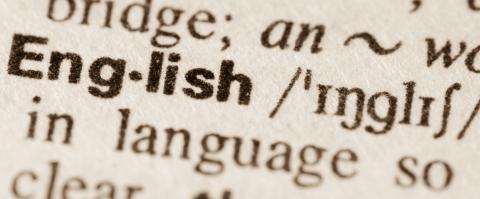
The purpose of a translation is to precisely convey meaning from one language into another. A high quality translation does this exactly as the client wants. Or does it?
What is the impact of quality on a translation?
The impact can be considerable: In 1840 the New Zealand Maori signed the Treaty of Waitangi with the British governor. But, due to a poor translation by a British missionary they signed very different documents. The Maoris thought they were getting a legal system giving them equal rights and “governance”, and which would help protect them from European criminals. The British version described that the Maoris were giving up their lands and rights to the Queen of England i.e. “sovereignty” for which, unfortunately, there was no equivalent term in Maori.
On the other hand a mistranslation can be humorous or even change behavior. In the 1950s as chocolate manufacturers introduced Valentine’s Day to Japan their advertising suggested that Japanese women give their men chocolates as a present - a tradition that continues till today.
Why is translation so complex?
Firstly, translation is a social, cross-linguistic and cross-cultural process requiring a number of persons and production steps for its creation. As a result, the translation can be assessed as being “more appropriate” or “less appropriate” for a diverse range of stakeholders depending on their expectations.
What are some factors that make one translation better than another?
On the client side the document may be highly technical or have specific terminology. The source text might be written poorly or passages are ambiguous. Client expectations of what a translation should achieve may differ from what the translator and or proof reader understand as a deliverable.
Cost, quality and time factors play an essential role. If the turnaround time is too short, quality suffers. The same is true for cost. A good translator is a highly educated and skillful professional who understands the nuances of transporting meaning from one language to another.
When a client feels the target text sounds wooden or is too close to the source language their expectations of what the translation needs to achieve it should be precisely defined in the brief. This is especially true when the translation is for a specific audience and has to be aligned to the target group i.e. localized.
Just as there are many roads to Rome there are many ways to convey meaning using synonyms and different sentence formulations - each of which can slightly change the intent of the original text, but all of which are appropriate e.g. Standort could mean site or location or even venue, position or place depending on context. For some words there is no or only partial “equivalence” in the target language and it is here that the translator has to determine the most appropriate solution.
Language combination plays a role too. German sentences are often very long, whereas in English shorter sentences are preferred. When a translator keeps close to the source text then a long English sentence may sound stilted. From the translator’s perspective the sentence properly transports meaning from the source text and “rewriting” is seen as incorrect. As a consequence, whether the text is “more or less” appropriate is a subjective judgment made by the respective stakeholders.
There are also objective approaches to quality measurement.
Guidelines and style guides that describe translation quality encourage a shared awareness of which acceptable subjective and objective criteria are appropriate. Error categories can be formal e.g. spelling, grammar, punctuation or the use of incorrect combinations of numbers and letters. Not using preferred terminology, corporate wording or glossaries are also sources of error. The translation itself may be inconsistent, incorrect or incomplete. Thus, the error severity level depends on the error category. As further classification, minor errors do not cause misunderstanding and are not found in a clearly visible position. Major errors disturb or distort meaning or are in a prominent position e.g. on a cover page, in a slogan or headline. Even worse they may cause faulty operation.
The essence of a high quality translation lies in a combination of factors ranging from the expectations and source text quality to the production processes on the translator or proofreader’s side and the assumptions about what the target translation should achieve. Understanding the impact of the cost-quality-time relationship and working with your language provider to prepare the best environment for your translation is critical to obtaining high quality.
Please find more information on translation peculiarities at: https://www.language-consulting.com/translation



